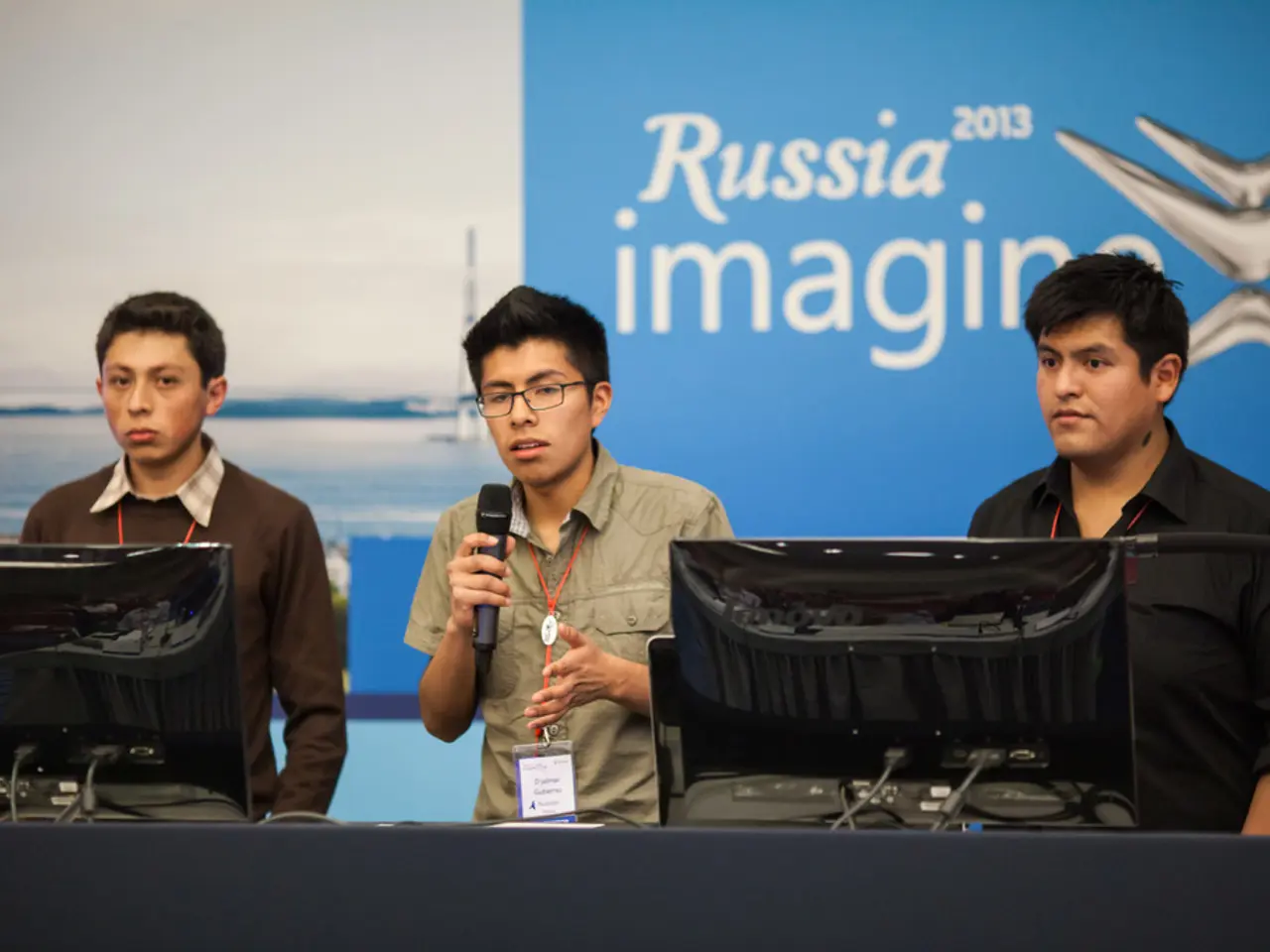China's AI Advancement Stride: Unveiling DeepSeek, China's Latest AI Move in Global Competition
DeepSeek, a cutting-edge AI language model developed by Chinese tech giant High-Flyer AI, has made waves in the global AI landscape. This Chinese AI model, released in January 2025, has proven to match or exceed the performance of leading Western models like GPT-4, all while using significantly fewer resources.
The emergence of DeepSeek signifies a significant milestone in China's broader strategy to establish itself as a global AI powerhouse. Its success is a testament to both technical innovation and strategic alignment with China's national ambitions.
### Technical Breakthrough and Efficiency
DeepSeek's R1 model stands out for its impressive efficiency. It requires only about 2,000 Nvidia H800 GPUs, a fraction of the resources needed by Western models, and operates at around 5% of their cost. This efficiency is largely due to architectural innovations such as sparse Mixture-of-Experts models and memory-efficient inference pipelines, which allow DeepSeek to circumvent severe US export controls on advanced chips.
### Open-Source Embrace and Collaboration
DeepSeek's open-source strategy, with models released under permissive licenses, has encouraged broad domestic and international collaboration. This approach is part of China's larger goal of reducing dependency on foreign AI platforms and mitigating geopolitical risks. It also reflects a coordinated national effort to foster innovation through public-private sector alignment, institutional coordination, and regulatory readiness, which accelerates AI scaling across the country.
### Structural Response to Export Controls
Despite US export restrictions aimed at curtailing China's access to high-end GPUs and slowing AI development, Chinese firms like High-Flyer AI have adopted multiple strategies: stockpiling chips, sourcing via intermediaries, and escalating domestic chip design and fabrication. Huawei's Ascend chips and Semiconductor Manufacturing International Corporation’s (SMIC) manufacturing capabilities exemplify this push toward self-reliance in semiconductor technology.
### Symbol of China’s AI Ambitions
DeepSeek's success aligns with China's broader national AI strategy, which integrates AI with historical technological strengths like data ecosystems, robotics, and fintech. The government's ability to mobilise resources, coordinate institutions, and foster a culture of techno-optimism supports rapid AI development, helping position China as a leading AI superpower.
### China’s Broader Vision and Geopolitical Implications
The growth and adoption of DeepSeek and similar models challenge US export control policies and raise questions about the effectiveness of decoupling strategies. They also provoke a "Sputnik moment" in US policy and tech circles, highlighting the urgency for the West to accelerate AI innovation, openness, and investment.
DeepSeek's open-source orientation and efficiency innovations may enable wider proliferation of advanced AI capabilities, not only within China but internationally, potentially diluting Western dominance of foundational AI technologies. This could shift the control points in AI development and deployment, influencing global power balances, data governance norms, and AI ethical standards.
In response, initiatives like the American DeepSeek Project aim to build fully open-source AI models at competitive scales, with the dual goals of preserving Western leadership in AI research and countering the trend toward closed, monopolistic AI ecosystems.
### Concerns and Considerations
Despite its technical promise, DeepSeek also raises issues about democratic accountability and openness in AI governance within China. State media enthusiasm contrasts with concerns about transparency and ethical oversight, suggesting that China's AI ascent may come with governance and societal trade-offs.
Experts emphasise the need for digital policy frameworks that address geopolitical implications of cross-border AI deployment, balancing the benefits of Chinese AI innovation with the imperative for ethical safeguards, transparency, and democratic accountability.
The controversy around TikTok, a Chinese-owned social media platform with over a billion users, stems from its governance, as algorithmic decisions are deeply influenced by Chinese content policies. TikTok's parent company, ByteDance, is based in China and obligated to comply with national intelligence and cybersecurity laws, raising concerns about data security, digital sovereignty, and ideological biases with the potential for international adoption of Chinese AI models.
In conclusion, DeepSeek and TikTok exemplify the synergy between AI, technology, and geopolitics, underscoring the need for global dialogue and cooperation to navigate this rapidly evolving landscape. As the AI race heats up, the global community must strike a balance between fostering innovation and ensuring ethical, transparent, and accountable AI development and deployment.
Artificial Intelligence (AI) advancements demonstrated by DeepSeek, such as the use of sparse Mixture-of-Experts models and memory-efficient inference pipelines, showcase China's commitment to technological innovation in AI. Furthermore, DeepSeek's open-source strategy encourages international collaboration, aligning with China's aim to reduce dependency on foreign AI platforms and foster innovation across the country.
Artificial Intelligence (AI) and technology collaborations, like DeepSeek's open-source approach, could potentially dilute Western dominance of foundational AI technologies if proliferated globally. However, concerns about democratic accountability and openness in AI governance within China, as exemplified by TikTok, highlight the need for ethical safeguards, transparency, and democratic accountability in AI development and deployment.




